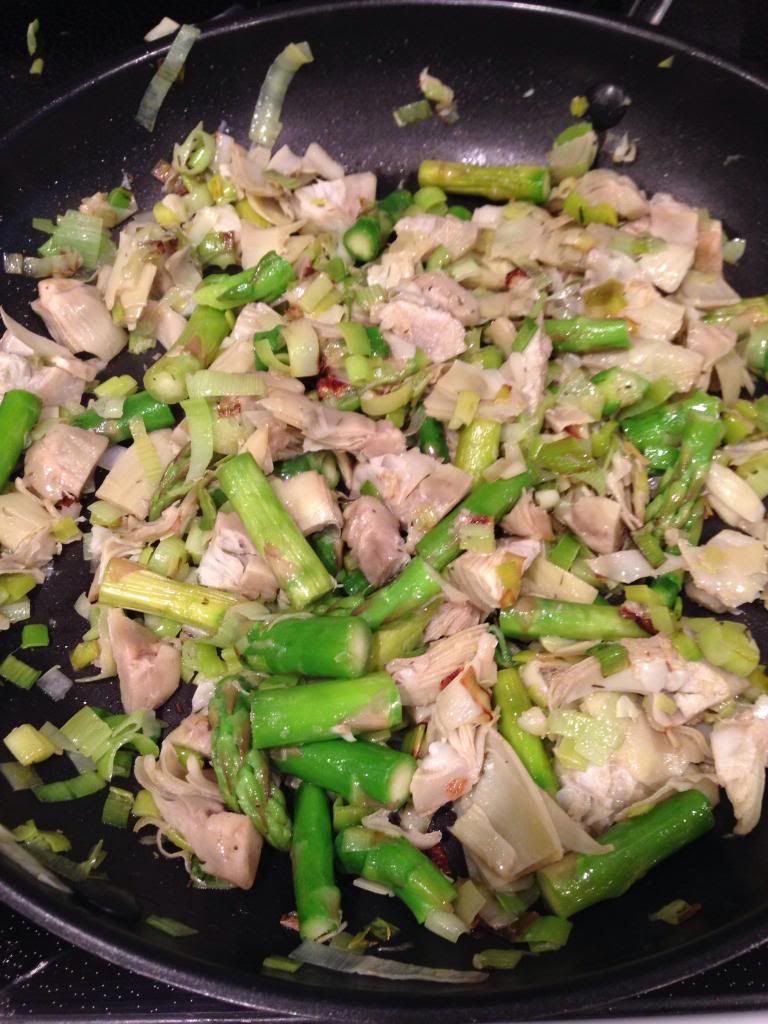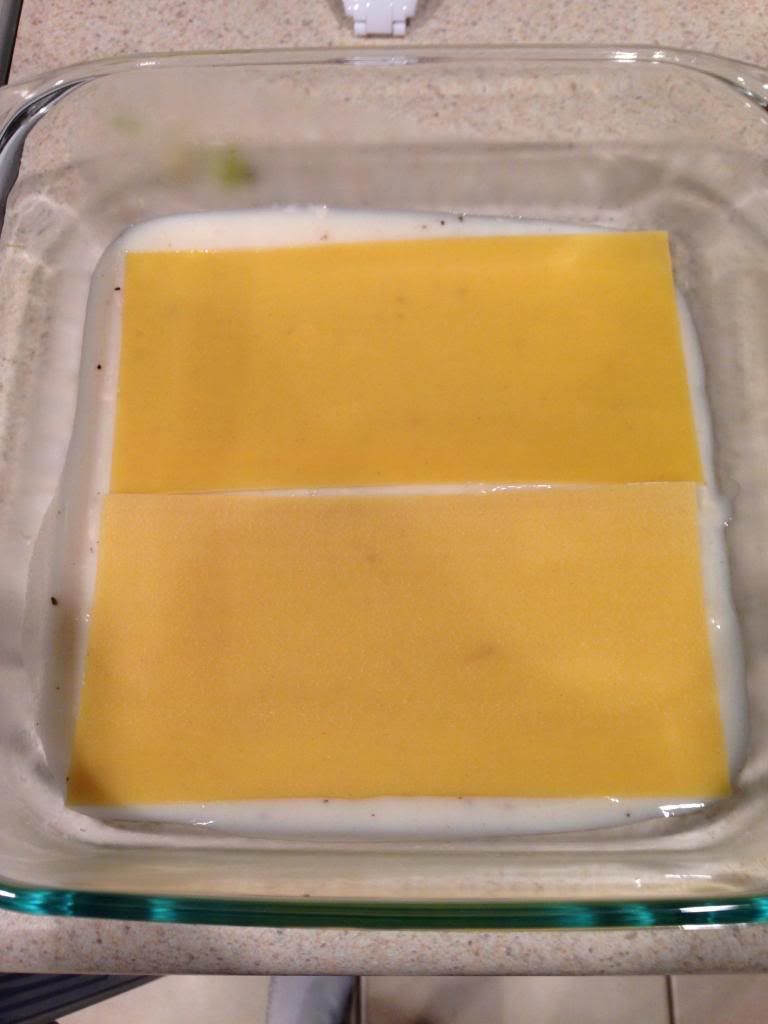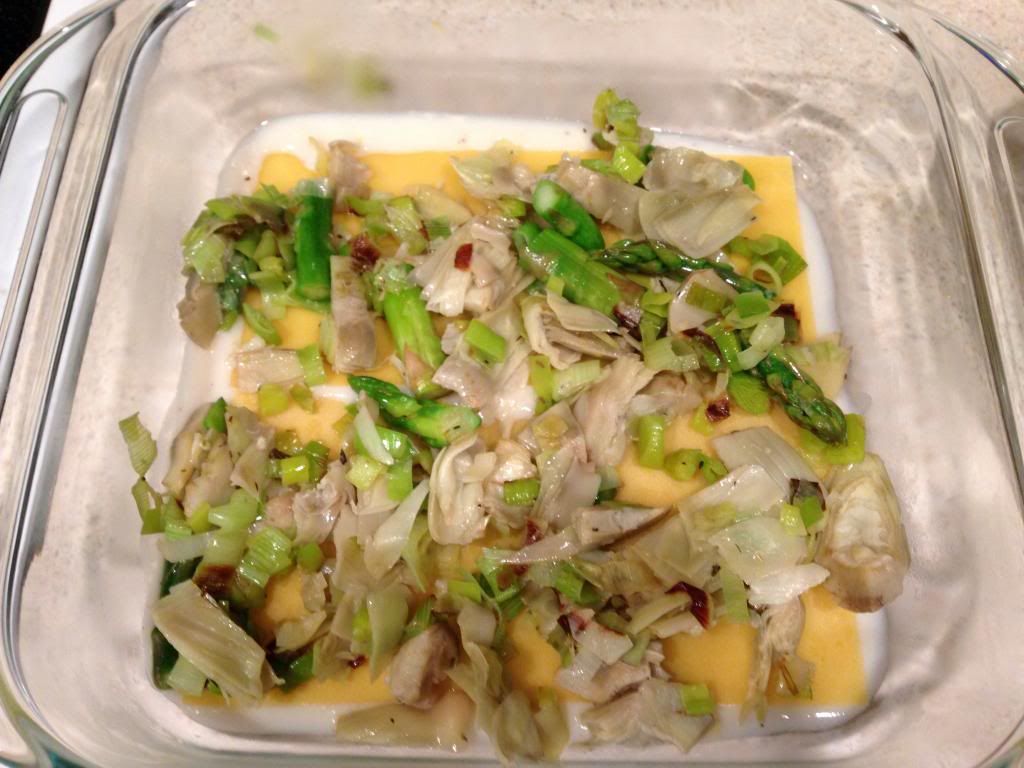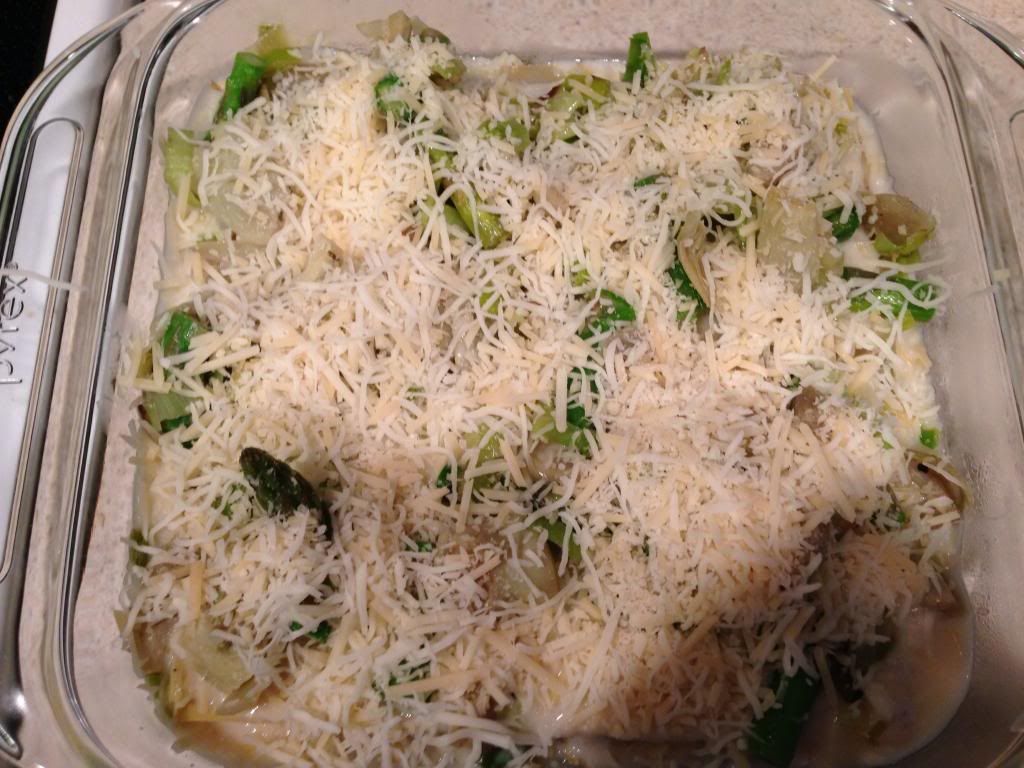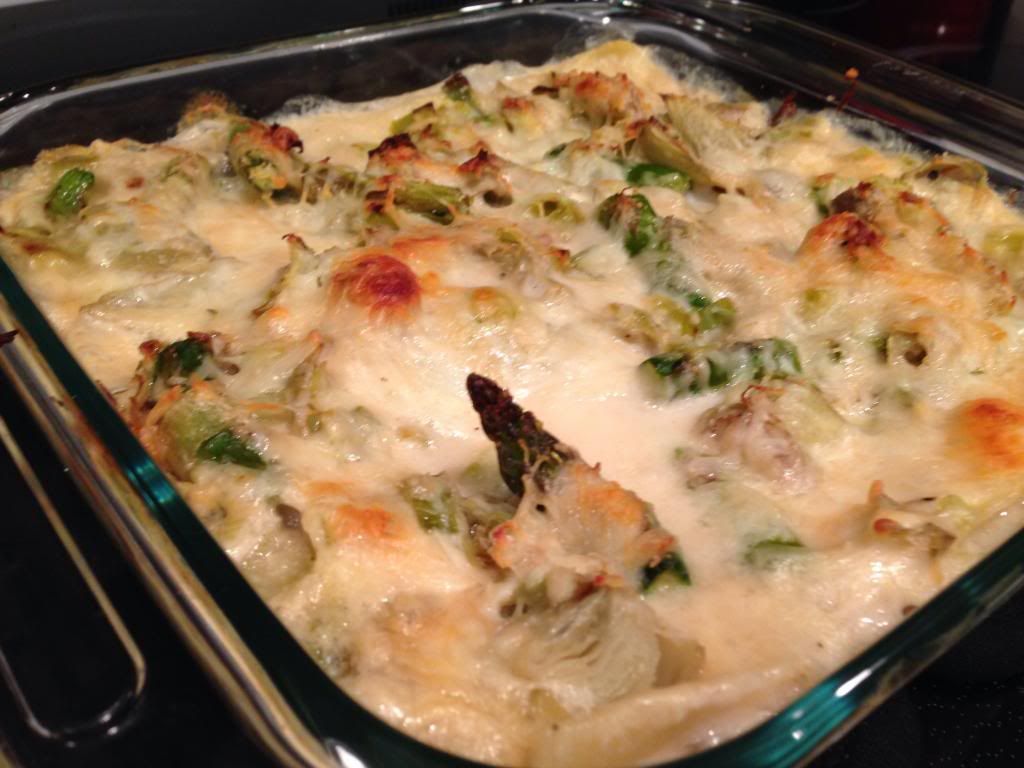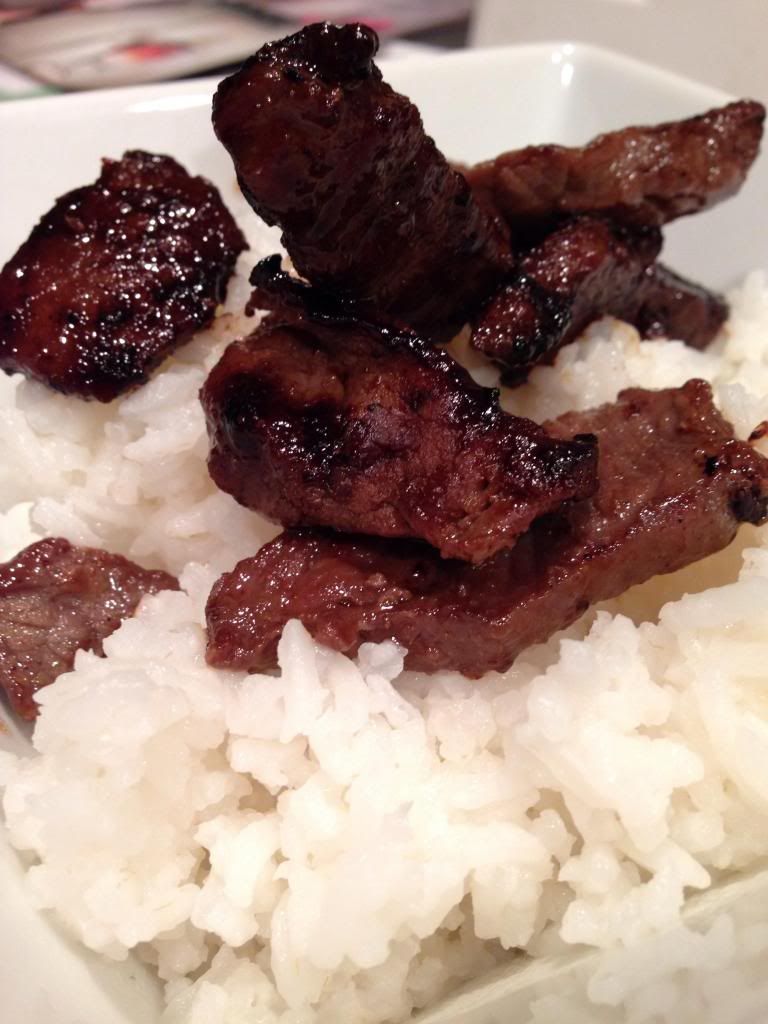Good evening everyone! We were graced with one 24 hour taste of spring earlier this week and I decided to take advantage of it. With the temperature reaching a pleasant 70 degrees, it was time to roll the grill out from the corner of the porch, clean it up and get the fire roaring once again. This will be a theme for much of the spring in summer here on the blog. We’ve got a feature lined up that we’ll be running all summer long that will focus exclusively on grilling…but that’s an announcement for another day.
Tonight, let’s focus on a pair of new recipes with a few new cooking methods tossed in as well.
The Recipe: California Barbeque Tri-Tip Steak
Original Recipe From: America’s Test Kitchen – Cook’s Country
What You’ll Need:
2 Pounds Tri-Tip Roast*
6 Garlic Cloves (Minced)
2 Tablespoons Olive Oil
2 Cups Wood Chips (We used hickory)
1 Teaspoon Pepper
¾ Teaspoon Salt
¾ Teaspoon Garlic Salt
*If you cannot find tri-tip roast, bottom round roast works as a substitute. (We used bottom round for our version of this dish). Just be sure to trim most of the fat from the bottom round, which can have a decently thick fat cap on the side / bottom of the roast.
This steak traditionally pairs with a fresh salsa called “Santa Maria Salsa”
What You’ll Need:
2 Pounds Ripe Tomatoes (Cored, chopped)
2 Teaspoons Salt
2 Jalapeno Chiles (Chopped)
1 Small Red Onion (Diced fine)
¼ Cup Fresh Lime Juice (2 Limes)
¼ Cup Fresh Cilantro (Roughly chopped)
¼ Teaspoon Dried Oregano
¼ Teaspoon Worcestershire Sauce
Finally, we’re pairing out steaks with a side of potato wedges. We were initially inspired by a recipe found in the same Cook’s Country cookbook but eventually changed it to the point where it became an original creation.
The Recipe: Fried Potato Wedges
What You’ll Need:
3-4 Medium Russet Potatoes
3 Cups Peanut Oil
Garlic Salt (To taste)
Onion Powder (To taste)
Cayenne Pepper (To taste)
To make these wedges, you’ll need to have a candy thermometer or a long probe thermometer like the one pictured below. Since we’ll be frying in oil, you’ll need to be able to tell the exact temperature of the oil before and during cooking. We just bought the product in the photo and will have a review for it in the coming weeks (after putting it through its paces).

 |
| An "action" shot of the thermometer |
Advance Prep:
You can prepare the salsa up to 24 hours ahead of time if needed, so I found it was easier to start here and then move on to the rest of the dishes. To prepare the salsa: add the chopped tomatoes to a strainer or colander and place over a bowl or in your sink (make sure your sink cannot be easily stained by tomato juices if you’re using this method). Season the tomatoes with the salt and allow them to rest for 30 minutes. The salt will pull most of the moisture from the tomatoes and allow it to drain into the bowl or sink. The salsa we’re making is a thicker variety and excess moisture would only serve to make things messy. Don’t skip this step!
Once the tomatoes have most of the moisture worked out of them, add them to a large bowl with the remaining ingredients and stir well to incorporate. Store in the refrigerator until you’re ready to serve. Allow the salsa to rest at room temperature for one hour prior to serving.
Now, let’s turn our attention to the steak. In a small bowl, combine the olive oil and minced garlic until it forms a thick paste. Using a fork, pierce each side of the steak roughly 20 times (so there is an even distribution of holes across the steak). If your steak has a side taller than 1 inch (bottom round roasts typically will) pierce the side a few times with a fork as well. Next, spread the garlic paste on the steak, making sure to cover all the surfaces evenly. Wrap the steak tightly in plastic wrap and store it in the refrigerator for at least an hour or up to 24 hours. (The longer, the better).
The Main Event:
How well do you multitask in the kitchen? Be honest. If you don’t do so well keeping an eye on two things at once, you’ll want to break the potato wedges and the steak into two separate undertakings. I can easily monitor multiple things while cooking, so I tackled both items at once. Maggie doesn’t do so well when two things need her attention, so she would opt to prepare this recipe differently. There’s no wrong way to approach it – but given what we’re working with here (frying oil and a steak on a grill) I thought it was good to have an honest assessment step here. Think about it, come up with a result and tackle these next two dishes as you feel most comfortable – I don’t want any emails about house fires or overdone steak.
In reality, it’s not hard prepare these dishes separately. If you’d rather cook the wedges, then cook the steak, simply preheat your oven to 200 degree and set a rimmed baking sheet aside. As you finish your wedges, simply add them to the baking sheet, then place the sheet in the oven. The oven will keep the wedges hot and crispy without further cooking them. (In fact, it’s not a bad idea to have the oven on 200 even if you’re multitasking – you’ll likely have to cook the wedges in batches and the oven will help keep the completed batches warm).
To prepare the wedges, slice your potatoes in half (lengthwise) and then cut each half into wedges. The thickness is entirely up to your preference. Just remember, a thicker wedge takes longer to fry. Meanwhile, heat the peanut oil over high heat. Set your thermometer to alert you when the temperature hits 340 degrees. (If your thermometer doesn’t have that feature – find one that does.)
Once the oil is at 340 degrees, carefully add a handful of wedges to the pot (don’t overcrowd the pot or it will slow the cooking process). Allow the wedges to fry in the oil for 5 to 10 minutes or until they turn a deep golden brown. Use a slotted spoon to remove the wedges and place them on your baking sheet. Season them with a blend of the garlic salt, onion powder and cayenne pepper before moving the baking sheet to the oven to keep warm.
 |
| Now we're frying |
Repeat this process until all of your wedges have been cooked. It’s important to keep your thermometer in the oil so you can monitor the temperature. As you add wedges, the oil’s temperature will drop. The further below 340 it falls, the longer it will take for them to cook. Conversely, if you don’t monitor the temperature and the heat on the stovetop, you could heat the oil beyond the smoke point of peanut oil (450 degrees) and cause a whole mess of problems in the kitchen. In short – keep the thermometer in the pot, you’ll need it.
You can store your wedges in a 200 degree oven to keep them warm until your steak is prepared. If you’re multitasking, the last batch of wedges should be done right as the steak is ready to serve.
Finally, let’s move our attention to the main event – the steak. Place the hickory chips in a bowl of water and allow them to soak for at least 15 minutes. Next, drain the excess water and place the wood chips into a foil pouch. Slice a few holes in the top of the pouch to allow the smoke to escape. Finally, carefully lay the pouch across the heating element in your grill (below the grates) and then light the grill. Prepare your grill by brining it to 500 degrees and cleaning the grates. Once it reaches 500 degrees, lower the temperature to 300.
Remove the steak from the refrigerator and carefully wipe away the excess garlic paste. Lightly season both sides of the steak with salt, pepper and garlic salt before placing it on the grill, directly above the foil packet with the wood chips. Close the lid and allow the steak to sear for 5 minutes before flipping the steak and searing the other side. Once both sides have established a nice crust, turn off the burners directly below your steak (If you’re using charcoal, you’ll need to employ the two zone cooking method) while leaving on the burners on the other side.
Now, here’s the hard part – especially if you like to meddle with your meats while they’re on the grill. Walk away. Just close the lid and walk away. Allow the steak to cook via the indirect heat of the second burner for 10 minutes before flipping it and allowing another 10 minutes of cooking.
After the steak has been on the grill for 20 minutes, use an instant read thermometer to check the thickest part of the steak. You’re looking for 130 degrees, which is medium rare. After 20 minutes, you should be either very close or right at 130 degrees. If you prefer your steak to be a little more done, add 10 minutes to the cooking time, which should yield a medium doneness and a temperature of 140 degrees.
 |
| Gorgeous |
Remove the steak from the grill and transfer it to a cutting board. Tent the steak with aluminum foil and allow it to rest for 10 minutes prior to slicing. (This allows the juices to return to the center of the meat, rather than run all over your cutting board). Slice the steak thin and serve with salsa on the side (don’t forget about the potatoes wedges!) Enjoy!
The Results:
This was my first time smoking any meat on our grill and it certainly won’t be the last.
Oh.
My.
Goodness.
The hickory smoke added an amazing layer of depth and flavor to the steak. The flavor penetrated into every bite and made the steak simply succulent. You don’t even need the salsa (or a steak sauce) – which is a shame because the salsa is very good in its own right. But when the steak is this flavorful, it doesn’t make any sense to burry the flavor.
The potato wedges were the perfect blend of crispy, yet soft in the center. You’re certainly free to use any seasoning on the wedges you’d like, but the blending of garlic salt, onion powder and cayenne pepper is a good place to start. These delightful little wedges complimented the steak beautifully. With our new probe thermometer, it was exceptionally easy to fry these beauties up.
Admittedly, this recipe tips the scales a little higher on the calorie front (750) than we typically like – but so long as you’re using fresh ingredients and not making up big feasts like this every night of the week, you’re perfectly fine treating yourself every now and again.
The bonus to this recipe is that you’ll likely have leftovers if you’re cooking for two. We’ll have a post this weekend showing you a creative way to use them for a whole new recipe. (Look for that on Sunday).
That’s all we have for you this evening, stop on by Sunday for another edition of our "Sunday special". Until then,
~Cheers



